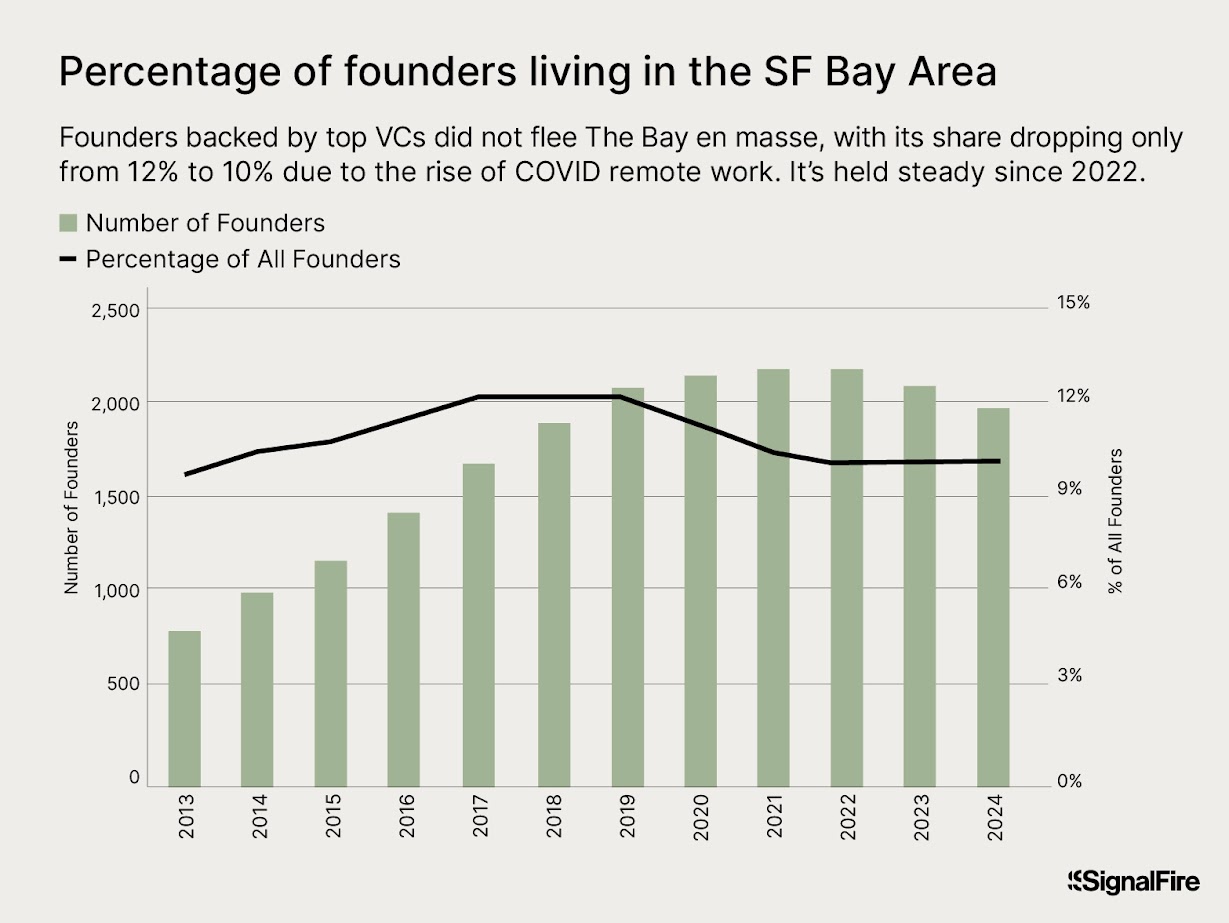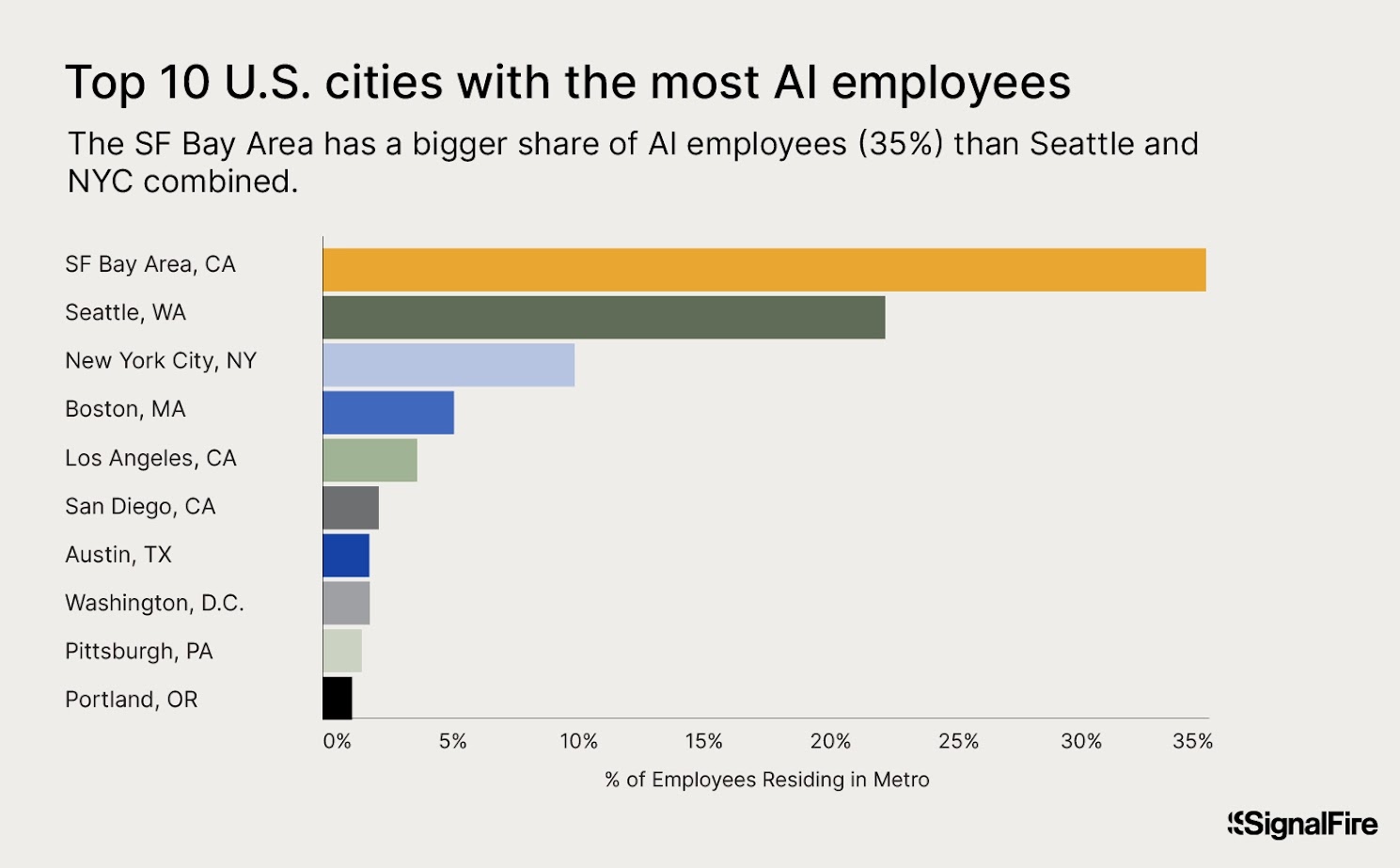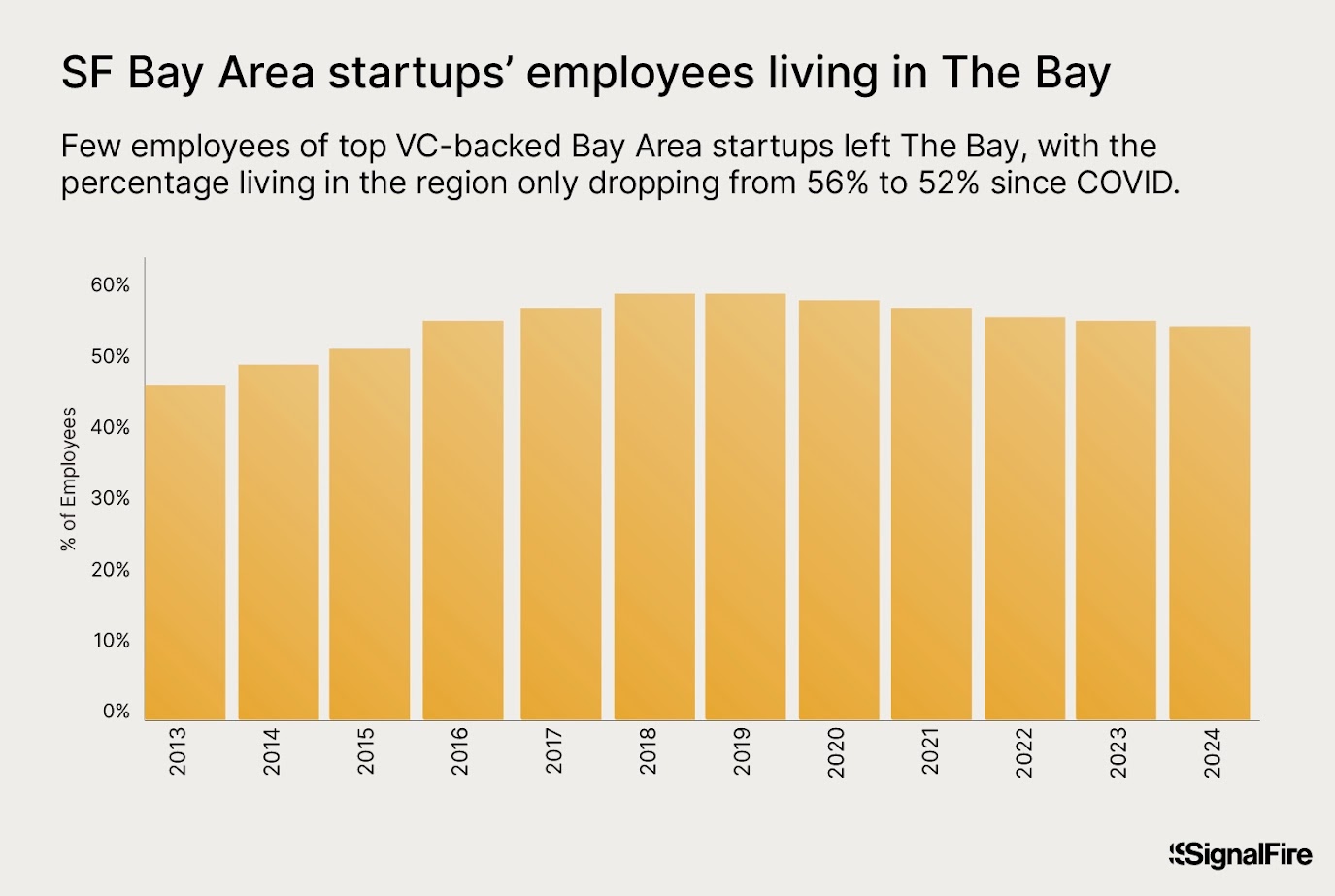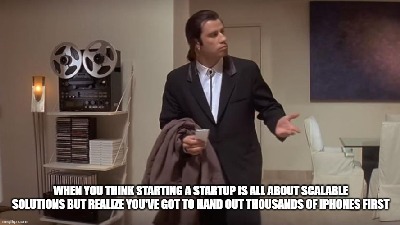For anyone who’s been following tech news over the past few years, you’ve probably heard a recurring narrative—San Francisco’s tech scene is dying. The pandemic, the rise of remote work, and relocations of high-profile companies painted a bleak picture. But the numbers tell a very different story.
Founders Are Still Here
In 2020, as the pandemic pushed everyone indoors, the assumption was that tech employees and founders would leave the Bay Area en masse. The high cost of living, concerns over safety, and newfound freedom to work remotely led many to predict that SF would no longer be the thriving hub it once was.
However, according to the data, this exodus never truly happened. As of 2024, 10% of all founders still live in the Bay Area. Yes, that’s down from 12% in 2019, but it’s not the collapse many anticipated. In fact, this percentage has held steady since 2022, signaling a stabilization.
Even though the percentage has dropped slightly, the number of founders remains strong. More than 1,950 founders are based in the Bay Area today, and while it’s a slight dip from the peak of 2,250 in 2022, the numbers are far from a mass migration. These figures confirm what many in the local tech scene already know—San Francisco remains the heart of startup culture.
The Rise of AI Is Fueling Growth
One of the reasons behind this stability is the rise of artificial intelligence. San Francisco has always been at the forefront of technological innovation, and AI is no different. The city’s dominance in AI funding is particularly impressive. More than 38% of all top VC Seed and Series A rounds for AI companies are happening right here in the Bay Area.
This isn’t just a temporary trend. The percentage of Y Combinator startups based in San Francisco is higher today than it’s been since 2014. More than half of the Winter 2023 batch of Y Combinator startups are based in the Bay Area, driven largely by AI startups. In fact, AI has become such a key part of the ecosystem that it’s brought a new wave of optimism to the local tech community.
Tech Talent Is Concentrated in SF
While other cities like Austin and New York have seen impressive growth in their tech sectors, San Francisco remains unmatched. As of 2023, the Bay Area accounts for 49% of all big tech engineers and 27% of startup engineers in the U.S. These numbers are more than four times that of the nearest competitor, Seattle.
SF’s lead in AI-related roles is similarly outsized. Around 35% of all AI engineers are based in the city, making it a magnet for talent in this cutting-edge field.
Why SF Tech Scene Never Truly Left
The reason San Francisco remains at the center of the tech universe is simple—talent and venture capital. The Bay Area has always been a hub for both, and despite all the talk of decline, those fundamentals haven’t changed. Tech employees may have the option to work remotely, but many still choose to live here.
The data from SignalFire shows that, although there was a slight dip in the percentage of founders and employees living in SF, the city remains far ahead of any other tech market. Even Elon Musk moving Tesla to Texas or the rise of Zoom didn’t significantly alter the landscape. In reality, many tech workers stayed, just not in the office.
Conclusion: SF’s Tech Scene is Still the Best Place to Build
It’s true that San Francisco faces challenges—rising rents, housing shortages, and civic issues. But the idea that SF’s tech scene is dead simply doesn’t hold up under scrutiny. The city continues to lead in areas that matter most—AI, tech talent, and venture capital.
In many ways, the current narrative around SF’s decline is driven more by sensational headlines than reality. The truth is that San Francisco remains the best place to build, especially if you’re in tech. Whether you’re a founder, an engineer, or an investor, the Bay Area continues to be a powerhouse of innovation.
Read the article: “Triumphant Return of SF Tech Boom”










